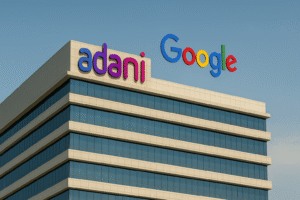As New Delhi continues to rank among the most polluted cities on the planet, the struggle for clean air has created a stark divide between those who can afford protection and those who cannot. While everyone breathes the same toxic air outdoors, a small segment of wealthy and upper-middle-class households are turning to expensive advanced air-cleaning technologies to escape the hazardous pollution levels inside their homes.
A High-Tech Escape — Only for the Rich
India records around 1.7 million pollution-related deaths annually, according to global health studies, with the crisis peaking in winter around the capital. This week, the government implemented emergency measures — halting construction, restricting older vehicles, and shifting schools online — to curb the pollution spike.
However, a few families with substantial means are now paying for a lab-style clean-air solution that can cost up to 70% of India’s average annual income.
One such company is YOGA (Your Own Green Area), which installs a “Clean Air Bubble” system for elite households. Instead of cleaning indoor air gradually like regular purifiers, their machine sits outside a home, pumps in filtered air, and creates positive pressure — preventing polluted air from entering at all.
The system has proven highly effective for reducing PM2.5, the microscopic particles that are most harmful and linked to premature death, dementia, and reduced productivity. Although academic studies are limited, customer data suggests indoor pollution drops to nearly zero after installation.
A Growing Market Driven by Alarm
Costing around $1,900 (₹1.6 lakh) for a standard three-bedroom apartment — in a country where the average annual income is $2,800 — the product remains out of reach for most. Yet demand is increasing rapidly. YOGA claims its business has doubled every year since 2020, with nearly 90% of customers based in Delhi.
Another company, Breathe Easy, founded in 2013, has also seen rising demand. It sells a similar clean-air pumping technology called the VaaYoo pollution shield for around $1,700, targeting both homes and large spaces like schools and malls.
Both companies say they are working on more affordable versions, including wearable clean-air devices for outdoor workers.
A Widening Clean-Air Divide
India’s severe air pollution has given rise to deep inequality — where breathing clean air is increasingly becoming a privilege.
Wellness coach Vaidehi Kanoria, a YOGA customer, acknowledges the divide:
“There are haves and have-nots, and it’s very unfortunate. But I do feel it’s important to protect your own health, however you can.”
For the majority of Indian families, however, clean-air machines remain unaffordable luxuries. Many rely on basic air purifiers, which often fail to significantly reduce pollution, especially without frequent filter replacements.
Public Frustration, But Limited Political Action
Despite the massive health impact, air pollution rarely features prominently in political campaigns. This week, hundreds of masked protesters gathered at India Gate carrying placards reading “Why is breathing a privilege?” and “There is poison in the air.”
Families that can afford to sometimes temporarily relocate from Delhi to escape the smog. But millions have no choice but to endure it.
One parent, Avishek Hazra, shared how his 7-year-old son felt pain in his eyes and throat immediately upon returning from a village with cleaner air.
“He doesn’t feel like going outside to play,” Hazra said.
Even with an air conditioner and a $230 purifier at home, Hazra said the device barely helps — and replacing filters is too costly.
Originally published on 24×7-news.com.








